When you are about to buy from a selection of plants, here are some tips for choosing the best one.
Even with just a little garden knowledge, you can learn how to choose good plants.
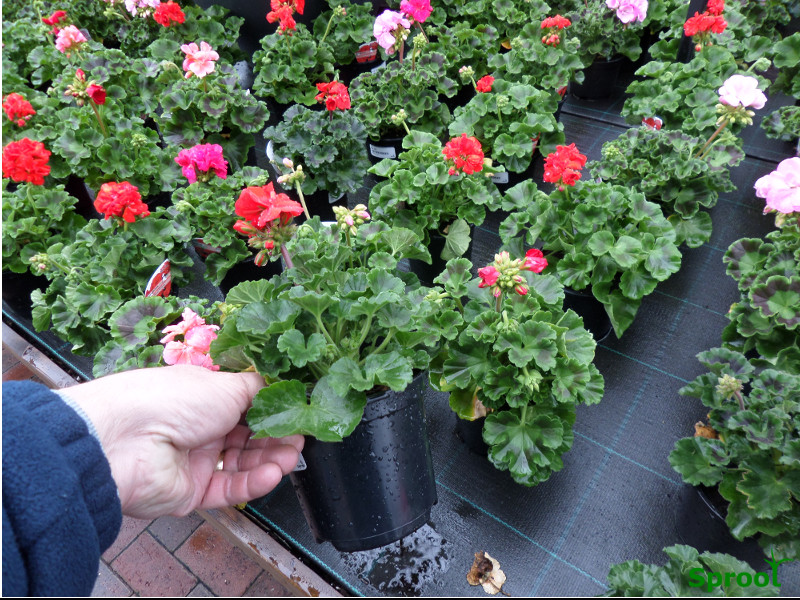
Time to get up close, pick up a few plants, turn them over to check under the leaves, then check if they all weigh the same, dry plants will be much lighter before they wilt.
look for the obvious first
Leaves
Do the leaves look normal, are all the leaves the same colour. If plants have dried out some of the lower older leaves will be red or brown and plants that have been kept in the dark will have leaves which are white or pale green.
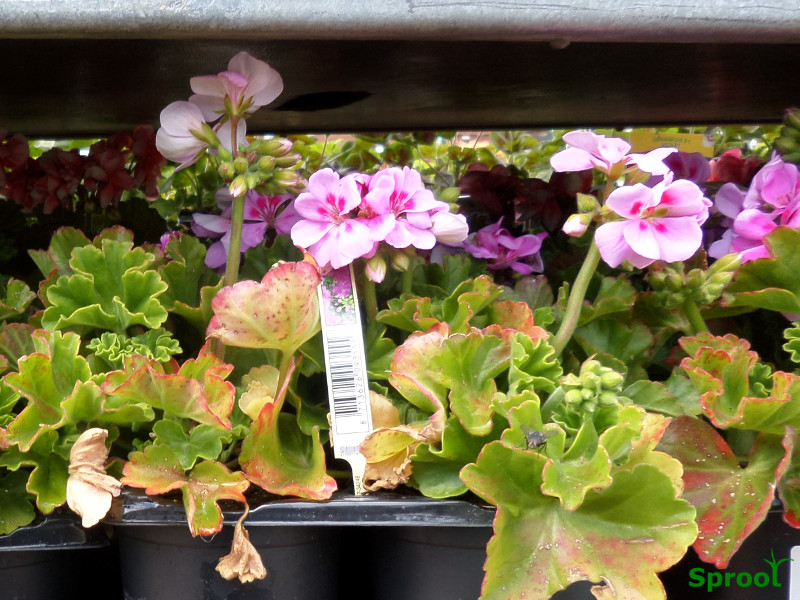
Ivy leaf geraniums showing signs of drought
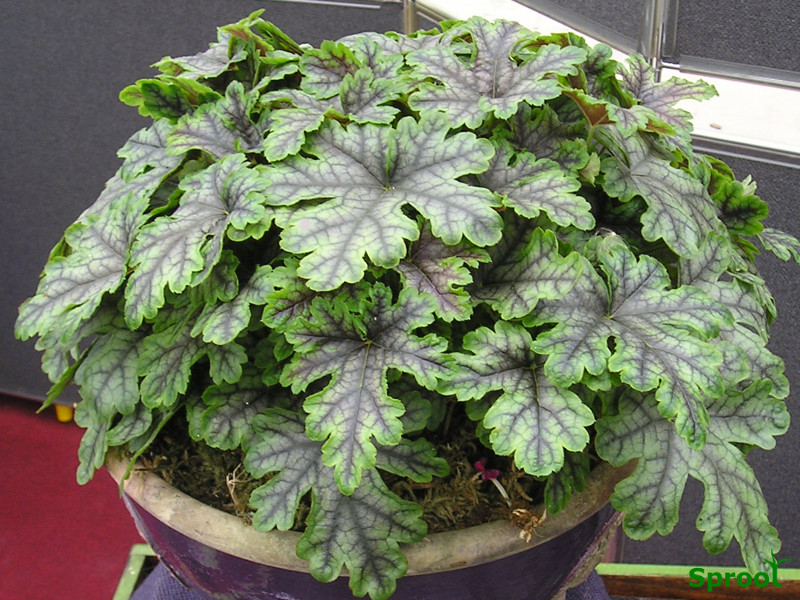
A healthy plant should be covered in leaves of a similar shape and colour. This also applies to coloured or striped leaves eg a plant with orange leaves should be consistently orange. In the picture, the heucherella has multicoloured leaves but all the leaves look the same shape and colour.
Coloured shoots.
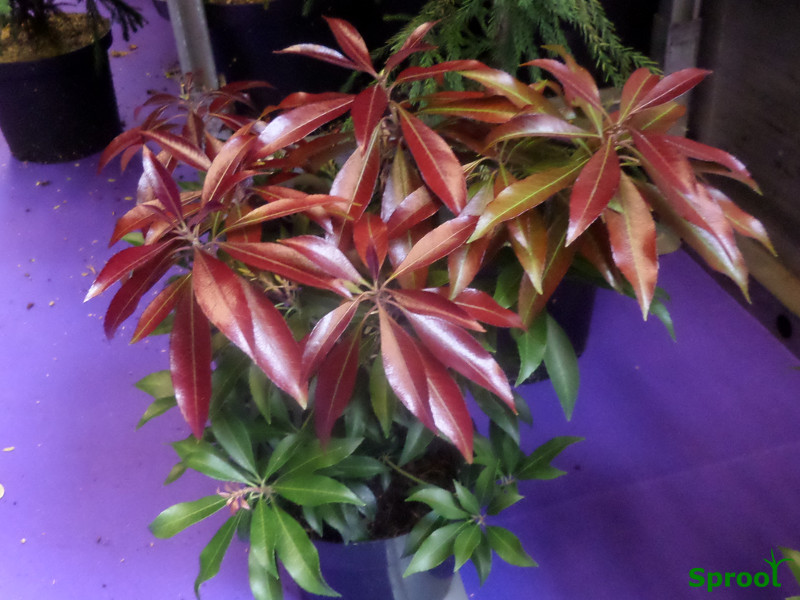
Some plants have brightly coloured shoots, in this case, the shoots should be evenly coloured and the older leaves should also be a consistent colour. The young shoots may offer a clue to recent damage but the older leaves will tell you what has happened to the plant in the past
Firm leaves.
The leaves should feel consistently firm, avoid plants that have wilted or limp leaves, they may recover but some damage to the plant will have occurred.
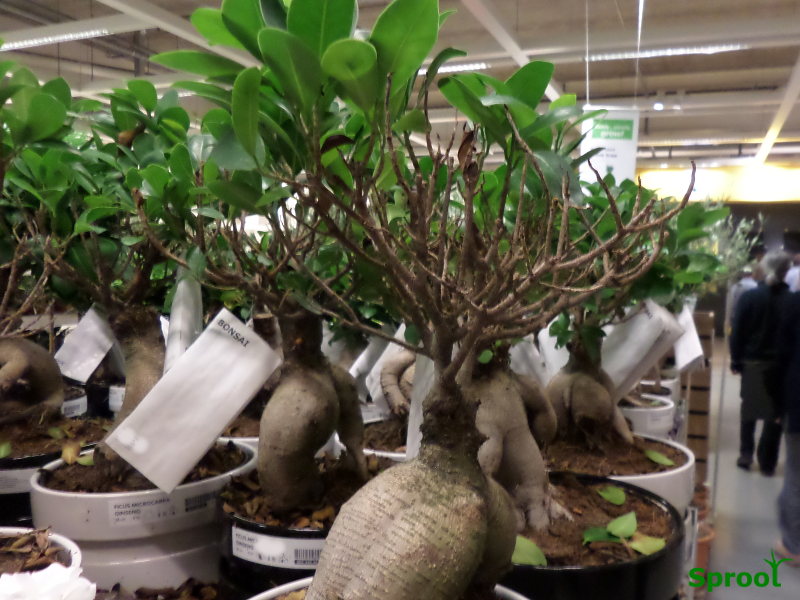
Give the plant a shake, the majority of leaves should stay attached 1 or 2 old leaves dropping off would be okay. Plants that have dried out or been exposed to very hot or cold conditions will drop most or all of their leaves. Evergreen plants will naturally drop some leaves during the year, these should be very old leaves from the middle of the plant.
Autumn leaves.
There are some exceptions, in the autumn it is normal for deciduous plants to drop their leaves. If they drop lots of leaves in the summer it is likely they have dried out.
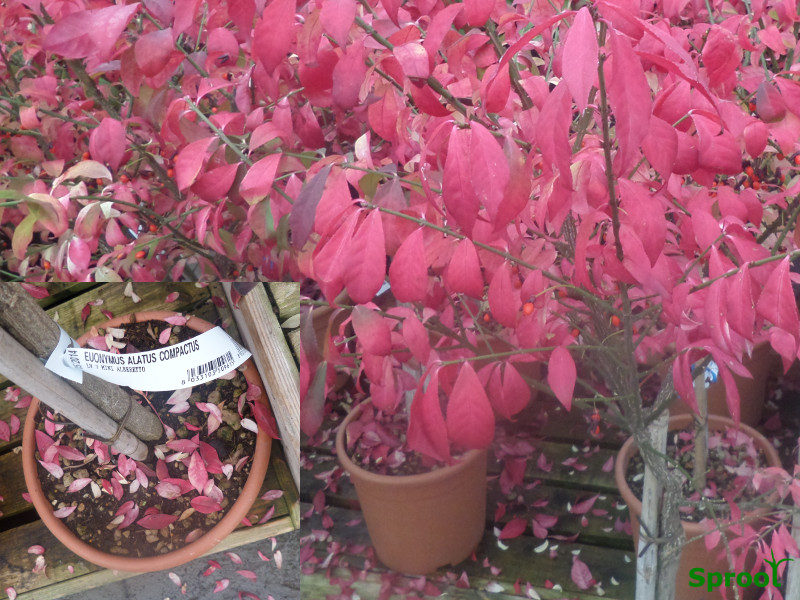
Autumn colour usually followed by dropping leaves
Consistent plants.
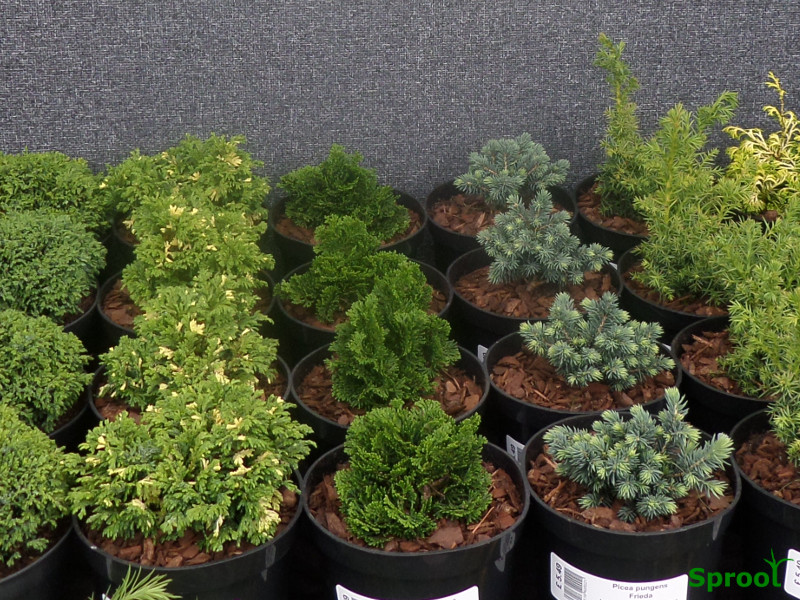
If the plants look similar, with even leaf colour and size this is a good sign, it shows the plants have been grown and looked after with some degree of skill. In the picture, you can see different plants but each group of four are consistent for shape and size. Always compare like for like, a rose and a conifer should look different
Dry plants
If you find dry or wilted plants in a batch of plants, this is not a good sign, its shows uneven watering and a lack of care, even if you avoid the dry plants you won’t know if the rest have also dried out previously. Damage from drying out can take 4-6 weeks to show in shrubs. In the picture, you can see some of the plants are dry to the point of wilting.
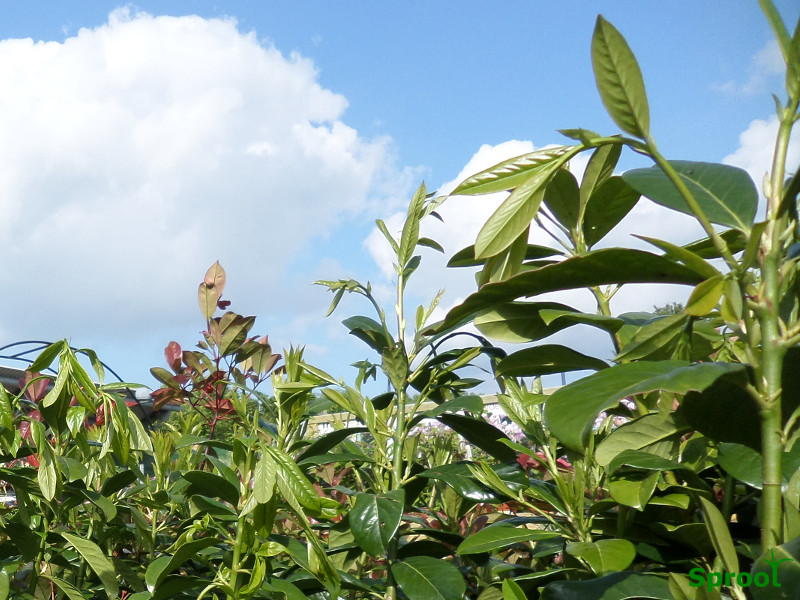
less obvious signs
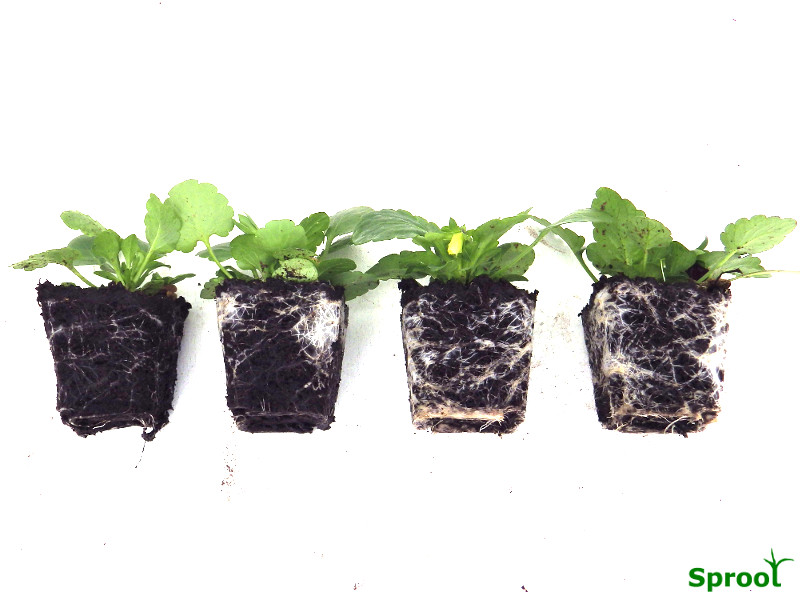
check the roots.
It might seem a bit odd, but if you got a group of growers together to look at plants, the first thing they would do is to take a few pots off and check the roots. They know the roots are the plant’s power supply and vital to plant growth. So don’t be embarrassed have a look, ask if you can take the plant out of the pot, look at the colour and quantity of the roots, as they are good indicators of plant health.
When plants are kept in the dark during delivery, left in the packing trays or on trolleys they start using up food stored in the plant, this can cause roots to die back and eventually yellow leaves will appear. Healthy roots can be any colour, you will need to compare 3 or 4 pots this will give you an idea of the colour and amount of root that is normal for that type of plant.
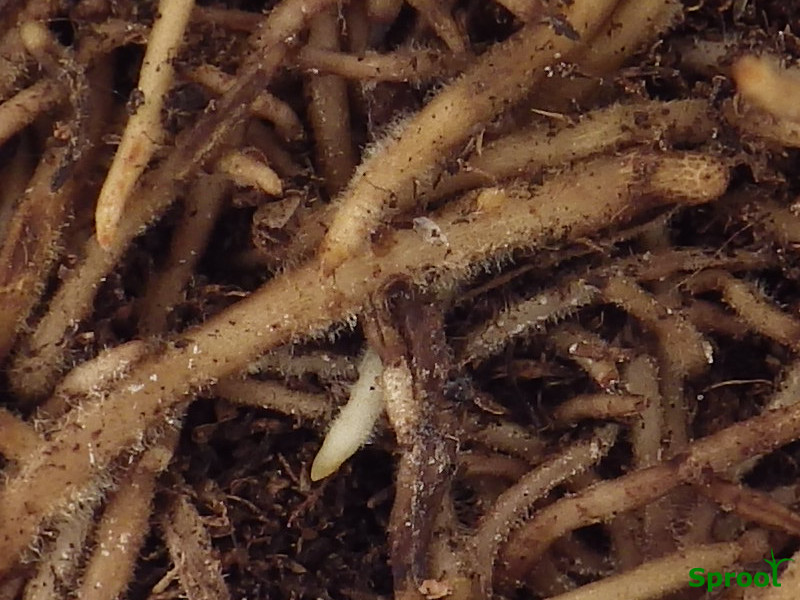
In the spring and summer, you should be able to see the root tips actively growing, they will be a different colour to the older roots.
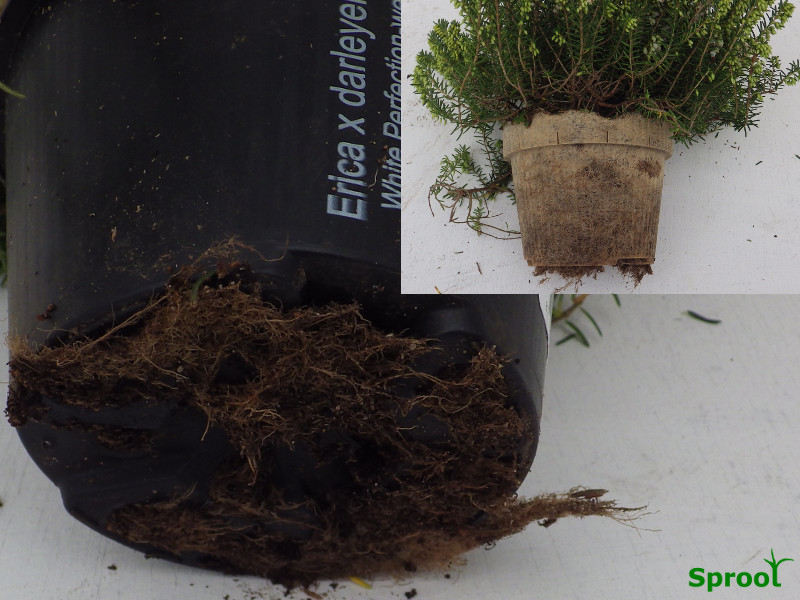
You are often told to look for white roots and not to buy root bound plants but some roots are brown and form dense mats. Heather is a good example of this, the roots always look brown and should fill the pot. When looking at roots just compare a few plants to see if they are consistent.
Finally trust your nose and smell the root area, a rotten smell (like stagnant water) would indicate dead roots.

